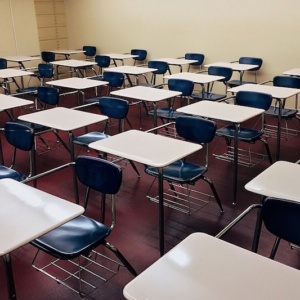Classrooms, especially grade school classrooms, are notoriously loud. We tend to credit the noise to students giggling with their friends and playing with their iPhones under their desks, but they may not be entirely to blame when it comes to tumultuous classrooms.
Think back to the last classroom you were in. What did it look like? Chances are there were tiled floors, cement walls, and endless rows of metal desks – the kinds of surfaces sound waves thrive on.
See our Comprehensive School Acoustics Design Standards
Classroom Noise Solutions
Sound waves deflect off of these hard surfaces, sending noise flying in every direction. This commotion makes it difficult for students to hear and encourages them to add to the chaos rather than strain their ears to listen. If you’re a teacher or educator looking to quiet your classrooms’ noise problem, you need to hear about these sound solutions.
Address Reverberation in Classrooms
Acoustic Absorption Panels are the simplest solution to any classroom noise problem. These durable panels can be installed in as little as fifteen minutes; perfect for teachers on a time crunch.
How It Works: Hang your panels around the room, placing a few on each wall. As sound waves are generated from students chatting, tapping their feet and clicking their pens, they will start to fly around the room and crash into any available surface. As the waves hit the panels, they will be absorbed by the acoustical fiberglass and fabric, silencing them and stopping them from further bouncing around the room.
Measure and Treat Echo
Echo occurs as noise bounces off of a surface and returns to the listener as a secondary sound. Bare rooms with hard surfaces, like classrooms, are likely to experience a good amount of echo. For educators on a budget, absorption foam is an affordable solution with high-cost results.
How it Works: Absorption foam is a lightweight product made from open cell polyurethane, allowing for quick and easy installation. The foam can be hung along walls with any construction adhesive approved for foam and can be installed in less than fifteen minutes. The highly-engineered material traps sound waves as they hit, diminishing echo and improving the listening quality of the room.
Loud background noise distracts students and makes hearing difficult. Help your students succeed by treating the noise and providing a quiet learning environment you can all enjoy.
Have a question about the acoustics of your classroom? Let us know in the comments below, at Commercial Acoustics, we’re always here to help!



